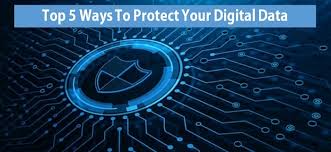
In today’s increasingly digital world, data is being stored and transferred every second of every day. At the same time, there are individuals who are actively trying to capture said data, which oftentimes contains important information related to your identity, including full name, age, address, phone number, social security, and more.
Recent studies have shown that a hacker attacks a computer at a constant rate of every 39 seconds on average, thereby affecting one-third of individuals each year.
One out of three people are being compromised every minute. How are these hackers so successful? The fact is that there are not proper security measures in place. These people being hacked probably have weak passwords, or are not safely disposing of information. They are probably not encrypting their data or do not have any security software in place in their computers.
Perhaps, even, they have fallen for a scam, such as a phishing email or phone call, where they gave their private information to somebody posing to be someone they are not.
In today’s blog, we’re making sure you are well-versed in how to protect your digital data with the top 5 best practices and resources to help you expand your knowledge base on the subject. Let’s get started.
Conduct Data Erasure Routinely
When it comes to protecting your digital data, it is important that you safely dispose of your personal information. Data erasure refers to overwriting the data on your hardware or software using zeros and ones so that they cannot be retrieved. This is especially applicable when working to get rid of information on hardware of software you plan to dispose of or share with others.
Not sure how to get started? There are data erasure white papers available to help you get well-versed in how to safely dispose of your information. Consult these resources for a simple guide on how to get started.
Encrypt Your Data
Data encryption is a form of security where your information on a software or hardware program is protected by an encryption key in order to access. When the data is scrambled or unreadable to an outsider without an encryption key, this is known as ciphertext. The data must be decrypted in order for it to be readable and accessible.
Encrypting your data is a great way to protect your digital information from getting into the wrong hands. It is an integral line of defense in the cybersecurity hierarchy. When encryption is applied, it is in one of two different forms: a symmetric key or asymmetric key.
A symmetric encryption key, also known as a secret key, is mainly used for one-on-one sharing and smaller amounts of data, and uses one key to both encode and decode the information. An asymmetric encryption key, also known as a public key cryptography, uses two linked keys, with one private and one public. The public encryption key can be used by anyone to encrypt while the private key is used to decrypt.
Use Password Best Practices
How strong is your password? You may be surprised at how easily hackers can figure out your passwords with basic information such as your name, gender, or age. Here are some best practices you should follow to ensure your passwords are strong and hacker-proof:
- Use different passwords for different accounts
- Use longer passwords (about 16 characters) instead of making them complex
- Create passwords that may be difficult to guess but easy for you to remember
- Avoid using your personal information in your passwords
- Use a password manager such as Dashlane or LastPass which stores your passwords for each platform, all in one place.
Install Security Software
If you own a computer, it is important that you have internet security software installed. You can buy these antivirus programs at your local computer technology store or download one online (just make sure it is from a legitimate website!). These programs act as a shield of defense for your computer, which contains valuable information. This way, you are notified when a website you visit or a link you download contains malicious information.
Beware of Scams
Every year, millions of people fall victim to online scams aimed at stealing their digital information. It is important to be aware of these scams and know what to look out for. For example, phishing email scams are the most common types of internet scams. This is when a cyber criminal poses as an official source such as a bank institution or financial authority and asks for your private information. Never respond to such inquiries!










